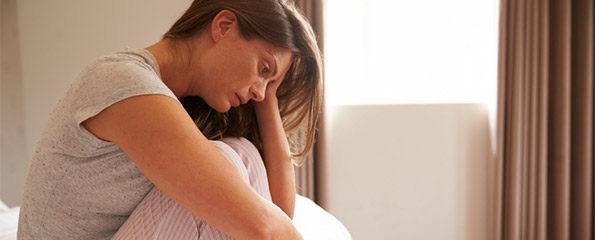Gender differences in mental health policy
Women experience higher rates of depression, anxiety and eating disorders than men but constantly fall through gaps in the health system, a new paper from the Australian Health Policy Collaboration at Victoria University has found.
The Australian Health Policy Collaboration (AHPC) is urging the Federal Government to address poor understanding of women’s mental health needs and boost prevention, treatment and management programs.
In a new policy paper it found that poor mental health in women has serious social and economic consequences – including disability, reduced life expectancy, unemployment, reduced productivity, and increased costs of healthcare and welfare.
The paper, Investing in Women’s Mental Health. Strengthening the Foundations for Women, Families and the Australian Economy shows how women’s mental health needs are significantly different to those of men.
It calls for a comprehensive new policy approach to improving women’s mental health across their life course.
Dr Maria Duggan, lead author and policy advisor, says there is an urgent need for new policy to recognise and address the fact that current policy, funding and service models are failing women.
“We are letting down some of the most vulnerable people in our community, by not paying attention to the physical health of people with mental illness,” she said.
“The life expectancy gap for women with serious mental illness is confronting and unacceptable. Women are dying up to 16 years earlier than their counterparts without serious mental illness, mostly from avoidable conditions including cardiovascular disease, cancer and respiratory conditions.”
The paper shows that:
- Mental health disorders are the leading cause of disability for women in Australia
- About 43% of women – about 3.5 million – have experienced mental illness
- Young women aged between 16 and 24 are reporting the highest rates of mental disorders
- One in five mothers of children aged 24 months or less are diagnosed with depression
- Women are almost twice more likely to suffer coexisting mental and physical illness than men
- Women in Aboriginal and Torres Strait Islander communities have much poorer physical and mental health than other Australians
- The suicide rate of Aboriginal and Torres Strait Islander women is highest within the 20-24 years old age group – more than five times higher than their non-indigenous counterparts.
This paper is one of a series that AHPC has developed setting out a roadmap for reversing the rising tide of chronic disease.
“It is vital that health policies and services recognise that gender is a significant factor in health risks and effective health treatments,” Dr Duggan says.
“Good health policy needs to take a life course approach, recognising that risks vary as people age and that optimal mental health is important to and for women of all ages.
“Gender-blind policy and service provision stems from incomplete analyses and understanding of causes and consequences and, as a result, leads to poor targeting of resources and poor health outcomes.”
She adds that this approach is not only costly but highly inefficient.
“It is time to act on the evidence to tackle the levels of chronic mental ill health amongst women,” Dr Duggan says.
“Improving women’s health – and in particular taking specific, evidence-based action to tackle mental illnesses amongst women and girls most at risk – will strengthen the wellbeing of children, families and communities, providing a high social return on investment.”
The policy paper was launched at a roundtable discussion with senior leaders of Australia’s health sector.
(Source: Victoria University)
Dates
Tags
Created by:

 Login
Login














